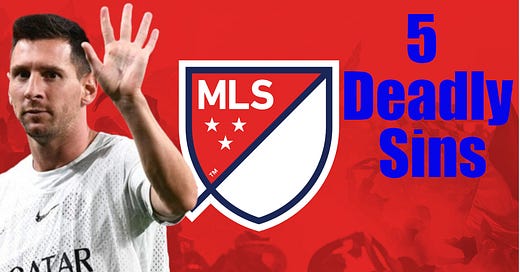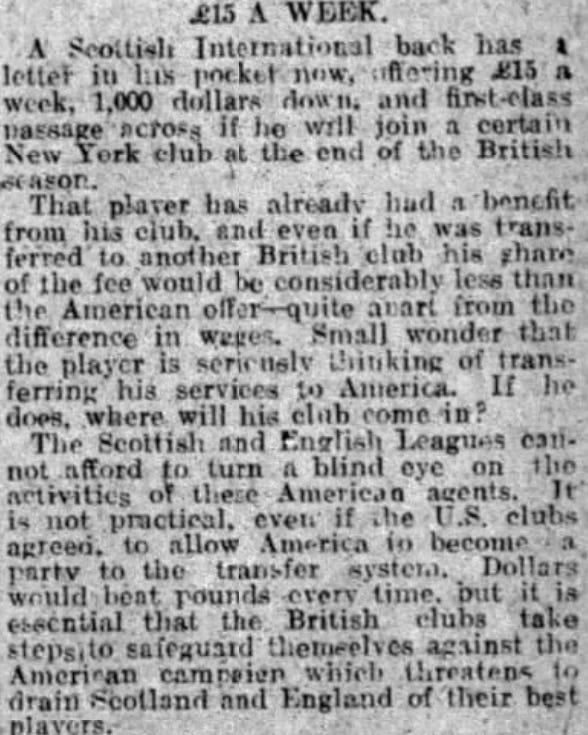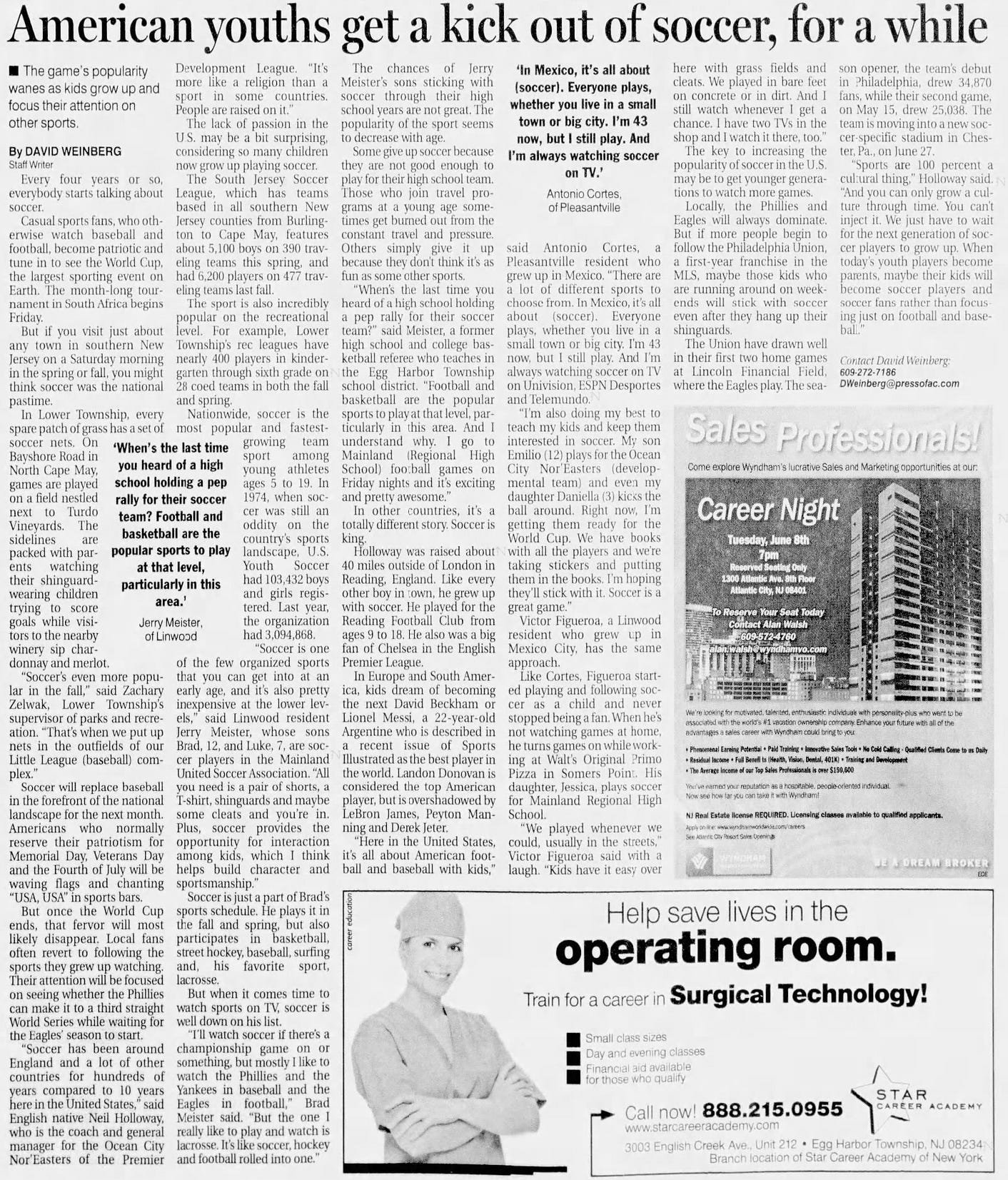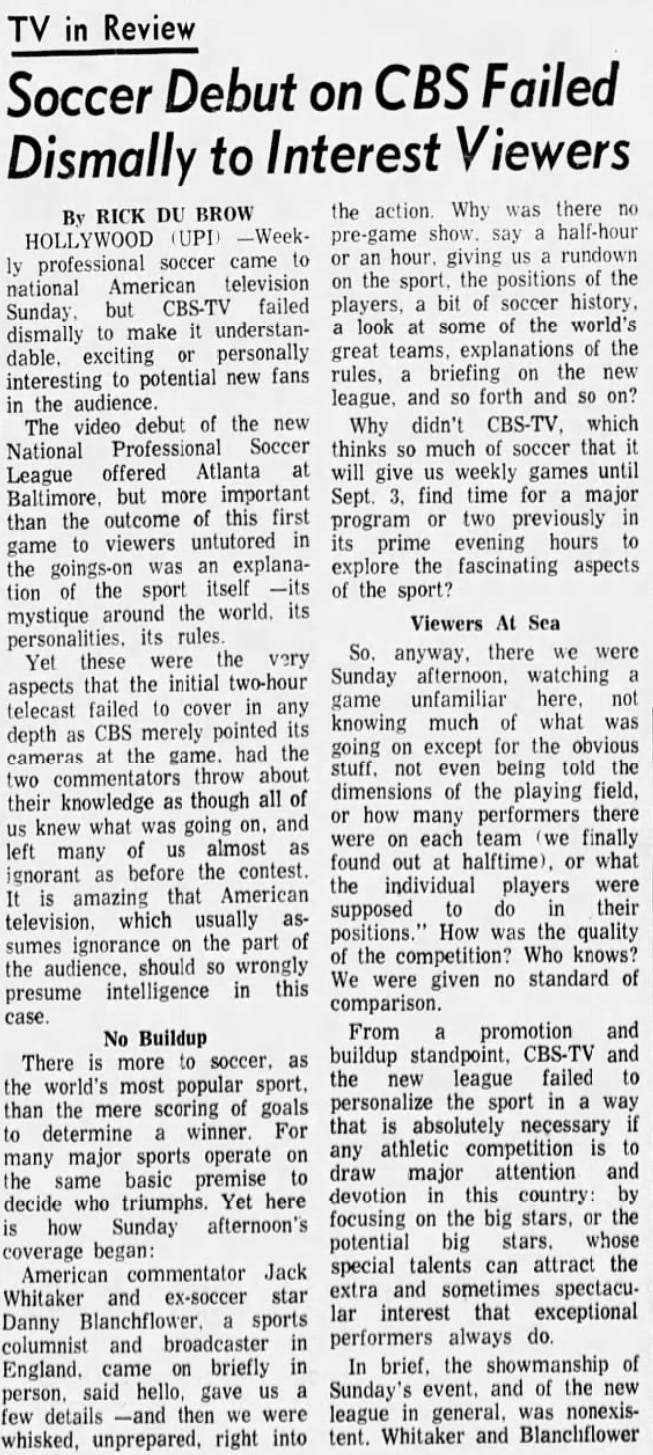The 5 Deadly Sins of American Soccer
Why the game has never lived up to its potential
The 5 Deadly Sins of American Soccer
I love sports history. I’ve spent a bit of time recently looking into the early history of soccer in the United States.
I’ve noticed that the same issues tend to crop up over time. Here are what I consider to be the 5 biggest issues holding the sport back in America.
Insisting on Starting From The Top
This one goes way back. Since at least the mid-1920s, professional soccer teams in the United States have insisted on importing expensive European stars.
There’s nothing wrong with foreign players, mind you — and I am a strong supporter of immigration rights. However, there is a problem when you infringe on contracts in other countries to do so.
The hilarious thing is that there actually were youth soccer leagues in the United States at the time. The players were good, too. Check out this from only two months later:
People always talk about how the 1950 United States World Cup team had to rely on imported foreign players. But why? What happened to these youth leagues? Why doesn’t anybody ever mention them?
The NASL suffered greatly from importing expensive foreigners at a time when its profitability was still questionable. The MLS is making the same mistake again today. Meanwhile, the best United States soccer players all play in Europe.
Believing Your Own Hype
Want to have fun? Count the number of articles you can find from the last 50 years about how soccer is the fastest growing sport in America.
There are two examples to look at.
The kids don’t hold on to the sport, sadly:
What David Weinberg apparently didn’t realize is that New Jersey has always been one of the hotbeds of soccer talent in America. You can find good amateur and semipro teams from the state going back over a century. And yet we still hear and read about how it’s going to be the next big sport one of these years.
You know — maybe kids would want to keep playing if there was a youth soccer system that made sense. The combined system of youth academies and collegiate play strikes me as a poor substitute for the more organized and team controlled systems of Europe.
Bizarre Rules
The MLS isn’t entirely guilty of this. The NASL, and its predecesor, the NPSL, were absolutely guilty of using asinine and insane rules.
Take how points in the standings counted as an example. The two earlier American leagues decided to give 6 points for a win, 3 for a draw, and a bonus point for each of the first 3 goals scored in any match.
This was widely ridiculed in the American sporting community.
Sadly, this was one of only two mentions of the NPSL I could find in Sports Illustrated issues from 1967. The other one was a complaint about reports that the NPSL had instructed referees to hold up play to allow CBS to show commercials during televised games.
When you’ve got a brand new league, you really want more positive press than this.
Wrong Time Of Year
This one is up for debate. Seriously, though, there is no reason why soccer in the United States and even Canada has to be played in the summer.
I know the powers that be want to avoid direct competition with the National Football League. But why?
There are people in the United States who are tired of the brutality and commercialism of American football, not to mention just how slow the games have become. Top college football games now take up to 5 hours to play.
Wouldn’t it be nice to at least offer an alternative? Why is everybody afraid of competition?
Americanizing The Sport
I found a few articles from 1967 that complained about how soccer was broadcast.
You know what they complained about? They complained that the play-by-play men were dumbing down the sport for the audience.
You know what? I bet people would have enjoyed the action more if there were actual storylines to follow.
But you can’t have a bunch of storylines if your sport consists of a bunch of foreigners dropped into a community with no context and no history. And that is the biggest problem of all.
Good luck to the MLS with its coming expansion. I still seriously doubt it will ever amount to more than an insignificant minor league version of association football.
















